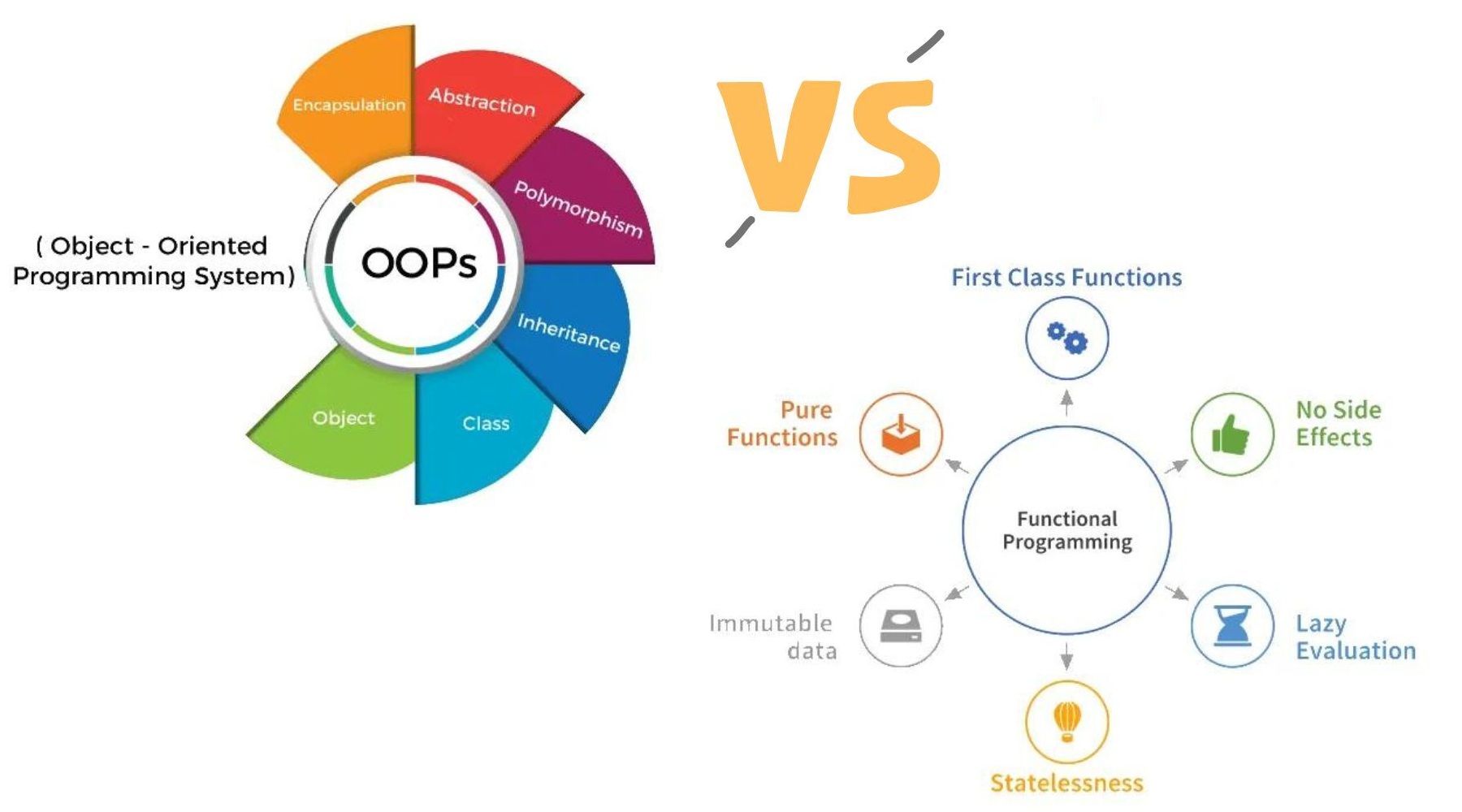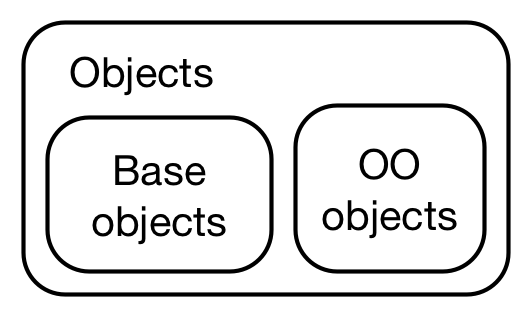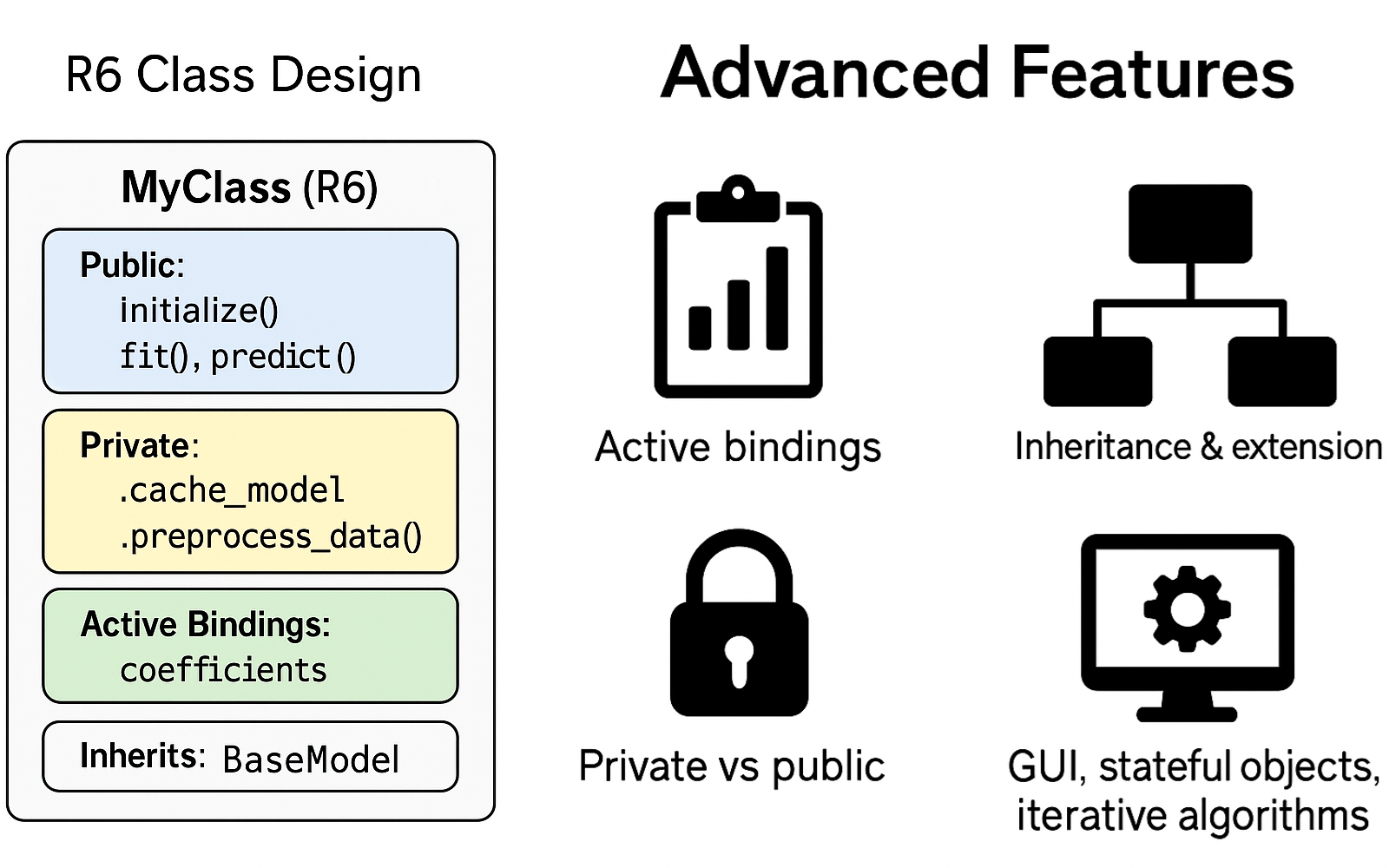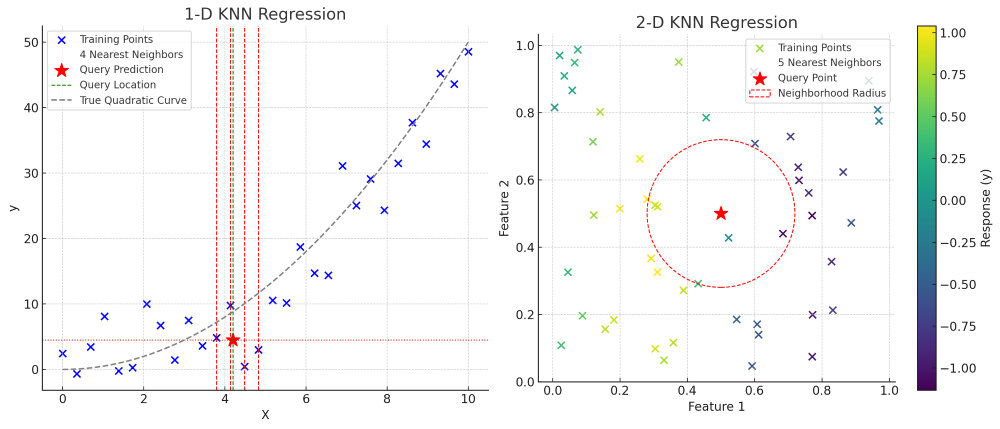Short Course on R Tools
Object-Oriented Programming in R
Marquette University
SCoRT - Summer 2025
Outline
- OOP Paradigms in R
- Base Types & Functional OOP
- S3 Classes & Methods
- S4 Classes & Methods
- R6 Classes & Reference Semantics
- S7 Classes - The New OOP System
- Trade-offs & Best Practices
- Hands-on Exercises
OOP Paradigms in R

- Functional OOP: functions return objects, operate on data
OOP Paradigms in R

- Encapsulated OOP: objects carry data + methods
library(mlr3)
# Create a classification task (encapsulates data + metadata)
task <- TaskClassif$new(id = "iris_task", backend = iris, target = "Species")
learner <- lrn("classif.rpart", predict_type = "prob")
# Real use of object$method(args)
learner$train(task)
prediction <- learner$predict(task)- When to use: design, extensibility, code organization
OOP in R

S3 is R’s first OOP system, which is an informal implementation of functional OOP.
S4 is a formal and rigorous rewrite of S3. S4 is implemented in the base methods package, which is always installed with R.
RC implements encapsulated OO.
R6 implements encapsulated OOP like RC, but resolves some important issues.
S7 is a modern, formal OOP system designed to unify and improve upon S3 and S4. It supports multiple dispatch, better type safety, and cleaner syntax, while maintaining compatibility with existing R code.
OOP in R
library(sloop)
otype(1:10)
#> [1] "base"
otype(mtcars)
#> [1] "S3"
mle_obj <- stats4::mle(function(x = 1) (x - 2) ^ 2)
otype(mle_obj)
#> [1] "S4"
Base versus OO objects
Base Types
- Every object has a base type. In total, there are 25 different base types. Here are some examples:
Informal approach to OOP in R
# A 'weather_report' object: just a list
weather <- list(
location = list(
city = "Seattle",
country = "USA",
coordinates = c(lat = 47.6062, lon = -122.3321)
),
date = as.Date("2025-05-30"),
summary = "Cloudy with light rain",
temperature = list(
morning = 57,
afternoon = 63,
evening = 60,
units = "F"
),
alerts = c("Flood watch", "Wind advisory")
)
# Assign a class
class(weather) <- "weather_report"
print.weather_report <- function(x) {
cat("🌤️ Weather Report\n")
cat("-------------------------\n")
cat("📍 Location: ", x$location$city, ", ", x$location$country, "\n", sep = "")
cat("🗓️ Date: ", format(x$date, "%B %d, %Y"), "\n")
cat("📋 Summary: ", x$summary, "\n")
cat("🌡 Temperature (", x$temperature$units, "):\n", sep = "")
cat(" Morning: ", x$temperature$morning, "\n")
cat(" Afternoon: ", x$temperature$afternoon, "\n")
cat(" Evening: ", x$temperature$evening, "\n")
if (length(x$alerts) > 0) {
cat("⚠️ Alerts: ", paste(x$alerts, collapse = "; "), "\n")
} else {
cat("✅ No active alerts.\n")
}
}
> print(weather)
🌤️ Weather Report
-------------------------
📍 Location: Seattle, USA
🗓️ Date: May 30, 2025
📋 Summary: Cloudy with light rain
🌡 Temperature (F):
Morning: 57
Afternoon: 63
Evening: 60
⚠️ Alerts: Flood watch; Wind advisory S3: Informal Classes
- Lightweight: no formal schema
Basics
- An S3 object is a base type with at least a
classattribute
f <- factor(c("a", "b", "b"))
f
#> [1] a b b
#> Levels: a b
attributes(f)
#> $levels
#> [1] "a" "b"
#>
#> $class
#> [1] "factor"
unclass(f)
#> [1] 1 2 2
#> attr(,"levels")
#> [1] "a" "b"
time <- strptime(c("2017-01-01", "2020-05-04 03:21"), "%Y-%m-%d")
str(time)
#> POSIXlt[1:2], format: "2017-01-01" "2020-05-04"
class(time) <- NULL
str(time)
#> List of 11
#> $ sec : num [1:2] 0 0
#> $ min : int [1:2] 0 0
#> $ hour : int [1:2] 0 0
#> $ mday : int [1:2] 1 4
#> $ mon : int [1:2] 0 4
#> $ year : int [1:2] 117 120
#> $ wday : int [1:2] 0 1
#> $ yday : int [1:2] 0 124
#> $ isdst : int [1:2] 0 0
#> $ zone : chr [1:2] "UTC" "UTC"
#> $ gmtoff: int [1:2] 0 0
#> - attr(*, "tzone")= chr "UTC"
#> - attr(*, "balanced")= logi TRUEClasses
# Create and assign class in one step
x <- structure(list(), class = "my_class")
# Create, then set class
x <- list()
class(x) <- "my_class"
class(x)
#> [1] "my_class"
inherits(x, "my_class")
#> [1] TRUE
inherits(x, "your_class")
#> [1] FALSE- R doesn’t stop you from shooting yourself in the foot, but as long as you don’t aim the gun at your toes and pull the trigger, you won’t have a problem.
Classes - Common Practice
To avoid foot-bullet intersections when creating your own class, you may:
- A low-level constructor,
new_myclass(), that efficiently creates new objects with the correct structure. - A validator,
validate_myclass(), that performs more computationally expensive checks to ensure that the object has correct values. - A user-friendly helper,
myclass(), that provides a convenient way for others to create objects of your class.
Classes - Example
## 1. Low‐level constructor: assume inputs are ok
new_myclass <- function(values = numeric(), unit = character(1)) {
# no checks here beyond base‐R stopifnot
stopifnot(is.numeric(values), is.character(unit), length(unit) == 1)
structure(
list(values = values, unit = unit),
class = "myclass"
)
}
## 2. Validator: more thorough checks
validate_myclass <- function(x) {
if (!inherits(x, "myclass")) {
stop("`x` must be a 'myclass' object.", call. = FALSE)
}
if (!is.numeric(x$values)) {
stop("`values` must be numeric.", call. = FALSE)
}
if (any(is.na(x$values))) {
stop("`values` must not contain NA.", call. = FALSE)
}
if (!is.character(x$unit) || length(x$unit) != 1) {
stop("`unit` must be a single character string.", call. = FALSE)
}
TRUE
}
## (Optional) a simple print method
print.myclass <- function(x, ...) {
cat("<myclass> ", length(x$values), "values [unit = ", x$unit, "]\n", sep = "")
print(x$values)
invisible(x)
}
## 3. User‐facing helper: coerce/check inputs, then build + validate
myclass <- function(values, unit = "unitless") {
# quick checks / coercions:
if (!is.numeric(values)) {
values <- as.numeric(values)
if (any(is.na(values))) stop("`values` could not be coerced to numeric.", call. = FALSE)
}
if (!is.character(unit) || length(unit) != 1) {
stop("`unit` must be a single character string.", call. = FALSE)
}
# build & validate
obj <- new_myclass(values = values, unit = unit)
validate_myclass(obj)
obj
}
## --- Example usage ---
x <- myclass(c(1.1, 2.2, 3.3), unit = "kg")
print(x)
#> <myclass> 3 values [unit = kg]
#> [1] 1.1 2.2 3.3
# This will error because of an NA:
# myclass(c(1, NA, 3))Generics and Methods - Method Dispatch
Finding methods
s3_methods_generic("mean")
#> # A tibble: 7 × 4
#> generic class visible source
#> <chr> <chr> <lgl> <chr>
#> 1 mean Date TRUE base
#> 2 mean default TRUE base
#> 3 mean difftime TRUE base
#> 4 mean POSIXct TRUE base
#> 5 mean POSIXlt TRUE base
#> 6 mean quosure FALSE registered S3method
#> 7 mean vctrs_vctr FALSE registered S3method
s3_methods_class("funts")
#> # A tibble: 7 × 4
#> generic class visible source
#> <chr> <chr> <lgl> <chr>
#> 1 - funts FALSE registered S3method
#> 2 * funts FALSE registered S3method
#> 3 [ funts FALSE registered S3method
#> 4 + funts FALSE registered S3method
#> 5 length funts FALSE registered S3method
#> 6 plot funts FALSE registered S3method
#> 7 print funts FALSE registered S3methodCreating methods
- A method must have the same arguments as its generic. This is enforced in packages by
R CMD check.
- There is one exception to this rule: if the generic has
..., the method can contain a superset of the arguments. This allows methods to take arbitrary additional arguments.
Inheritance
x <- factor("a","b","b")
class(x)
#> "factor"
class(ordered(x))
#> "ordered" "factor"
s3_dispatch(print(ordered(x)))
#> print.ordered
#> => print.factor
#> * print.default
s3_dispatch(ordered(x)[1])
#> [.ordered
#> => [.factor
#> [.default
#> -> [ (internal)- We’ll say that
orderedis a subclass offactorandfactoris a superclass ofordered.
Inheritance Cont.
new_secret <- function(x = double()) {
stopifnot(is.double(x))
structure(x, class = "secret")
}
print.secret <- function(x, ...) {
print(strrep("x", nchar(x)))
invisible(x)
}
x <- new_secret(c(15, 1, 456))
x
#> [1] "xx" "x" "xxx"
s3_dispatch(x[1])
#> [.secret
#> [.default
#> => [ (internal)
x[1]
#> [1] 15- To fix this, we need to provide a
[.secretmethod.
Inheritance Cont. - NextMethod()
S4: Formal Classes
# Definition: `setClass()` with slots
setClass("Person",
slots = list(
name = "character",
age = "numeric"
)
)
# Create instance
subj1 <- new("Person", name = "Adam", age = 30)
subj1
#> An object of class "Person"
#> Slot "name":
#> [1] "Adam"
#>
#> Slot "age":
#> [1] 30
# slot access via `@` and `slot()
obj1@name
#> [1] "Adam"
slot(obj1, "age")
#> [1] 30Generics & Methods
Inheritance & Virtual Classes
R6: Reference Classes
Advanced Features
- Active bindings
- Inheritance & extension
- Private vs public
- Use cases: GUI, stateful objects, iterative algorithms

S7: The New OOP System
- Designed by the R Consortium to unify S3+S4 and fix issues.
Key features:
- Multiple dispatch
- Formal class definitions
- Compatibility with S3/S4
- Faster than S4, simpler than R6
Trade-offs & Best Practices
| Paradigm | Pros | Cons |
|---|---|---|
| S3 | Simple, flexible | No schema, fragile dispatch |
| S4 | Formal, robust | Verbose, steep learning curve |
| R6 | Encapsulated, fast | Manual memory, low abstraction |
| S7 | Unified, type-safe | Newer, evolving ecosystem |
Choose based on complexity & team skill
Document constructors & methods clearly
Write unit tests for OO code
Hands-on Exercises (30 min)


Resources & References

- Advanced R: OO chapters by Hadley Wickham
- R Consortium Object-Oriented Programming Working Group
Q&A

Thank You
- Feedback welcome!

